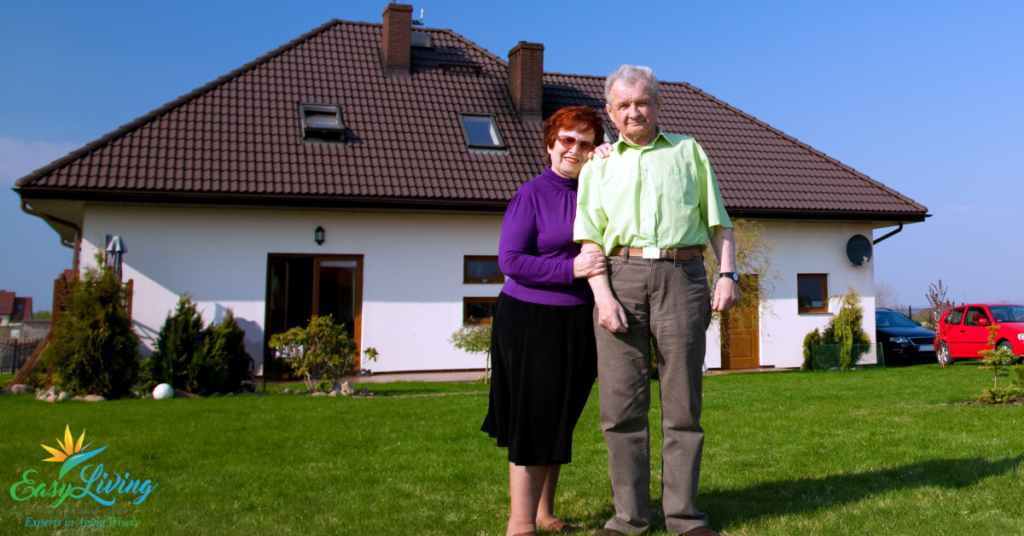By 2035, one in three U.S. households, versus today’s one in five, will be headed by someone 65 or older. Not only is the overall population aging, but the aging population is skewing older. For example, the 85-to-94-year old group experienced the fastest growth between 2000 and 2010, rising from 9.5 million to 12.4 million.
87% of adults age 65+ want to stay in their current home and community, according to a 2014 AARP study. With options for in-home care expanding over the past 20 years, nursing home use has declined, even as the older population has grown. The need for in-home care will only increase.
By 2035, the number of households with a person with a disability will reach more than 31 million—an increase of 76 percent over current numbers. Twelve million of these households will have someone who needs help with self-care, such as bathing and eating, and another 27 million will have an occupant who has limitations when it comes to household activities such as driving, cooking, and cleaning.
Aging at Home: Aging in Place Resources and Tips
Knowing that aging at home is the popular choice, the question becomes how. Clearly, many of us will need help in order to make aging in place safe and feasible. Fortunately, we have strong evidence that this is quite possible. For example, the Johns Hopkins CAPABLE program works with residents to stay in their homes more comfortably and safely. They team a nurse, an occupational therapist, and a handyman to address the home environment and build on the strengths of the elder. 80% of participants significantly improved their self-care and independence.
We’ll outline some of the steps to take for safe and happy aging at home, from key research findings and our years of helping seniors. If aging at home is important to you (or a loved one), start taking these steps now.
Get a home assessment to make your house aging in place friendly.
The Johns Hopkins study found that small modifications enabled seniors to be more independent. Additionally, the savings realized (from reduced inpatient and outpatient care) were over 6x the costs involved. And, that only accounts for the study period, not potential long-term savings from being able to stay home longer and stay healthier.
Start to take a look at your home environment with our aging at home safety checklist.
Then, take the next step by contacting us about a professional aging-in-place home evaluation. Our experts often identify simple, no and low-cost adaptations that prevent clients from having falls, accidents, and worsened health. Unfortunately, without those changes, many of the clients would end up in the hospital and possibly a nursing home.
Take your “ounce of prevention”.
- Be sure to get regular checkups and health screenings. Medicare pays for preventive care, but too many seniors still don’t take advantage of what’s offered. Screenings help you catch a problem before it becomes a crisis.
- Manage your medications. Medication errors kill over 125,000 people each year. Almost a quarter of people admitted to nursing homes have problems managing their medications. Get a medication review; ask your doctor if you can stop taking any medications or simplify your routine. And, consider getting assistance with medication management or trying a medication reminder app or electronic pillbox.
- Coordinated care is quality care. As we get older, we tend to have more chronic conditions, see more doctors, and take more medications. You could benefit from a patient advocate to help manage your care. Also, check out our advice in How to Make Your Doctor’s Appointment More Productive. To more effectively coordinate care, take time to organize your medical records now (or get help).
Address key trouble spots for aging at home.
We’ve already mentioned medications and optimizing your health. The other thing that keeps many people from aging in place is falling. More than 1 in 4 seniors falls each year, and some 800,000 end up in the hospital. A home evaluation will identify environmental hazards. You should also keep on top of eyesight, hearing, balance or other issues that might put you at risk for falls.
Nutrition needs change as we get older. We need more nutrient-dense foods, especially if we suffer from medical conditions. But, many elders, especially those living alone, actually eat less healthy foods. Studies show single elders eat 2.3 fewer vegetables/day. An unhealthy diet can lead to all kinds of health problems and general decline.
Managing a household is a lot at any age. For many elders, the ideal of aging at home turns into a burden. You might find the best solution is hiring a home caregiver. They can assist with housekeeping, meal preparation and more. As an added benefit, they’re trained to help with physical needs and additional care. Rather than hiring a housekeeper or unqualified companion now who can’t help later, hiring through a home health company sets you up for long-term aging in place.
Another way they can help is with transportation, errands and activities outside the home. More than 50 percent of nondrivers over age 65 do not leave home most days. Isolation is a serious problem for all seniors aging at home, but especially those without their own transportation. However, there’s no reason that giving up your keys has to limit you. Along with caregivers offering personalized transportation, we now have options like Lyft Concierge and all kinds of local senior transportation. Isolation and inactivity put you at risk for depression, decline and health problems.
Find out more about getting the support you need at home.
Simplify and declutter your life and home.
A final tip that everyone can use to improve life at home is to simplify. It is trendy right now with the popularity of Marie Kondo. But, there’s a reason her methods are popular. Decluttering will help minimize fall and accident risks. It also makes it easier to manage your household and keep things clean. We tend to accumulate things over time. Not only can it become a safety risk, it adds to the burden of the household for you and your loved ones.
Additionally, getting organized and simplifying can reduce the time you spend on various tasks. Have someone help you organize your records. You may want to consolidate accounts and set up automatic bill pay/deductions. You might even find ways to save money! When you know what you have and where everything is, you’re less likely to make mistakes or get scammed.
Want to stay in the comfort of home as you get older?
Consult with a care manager and get a plan in place.







